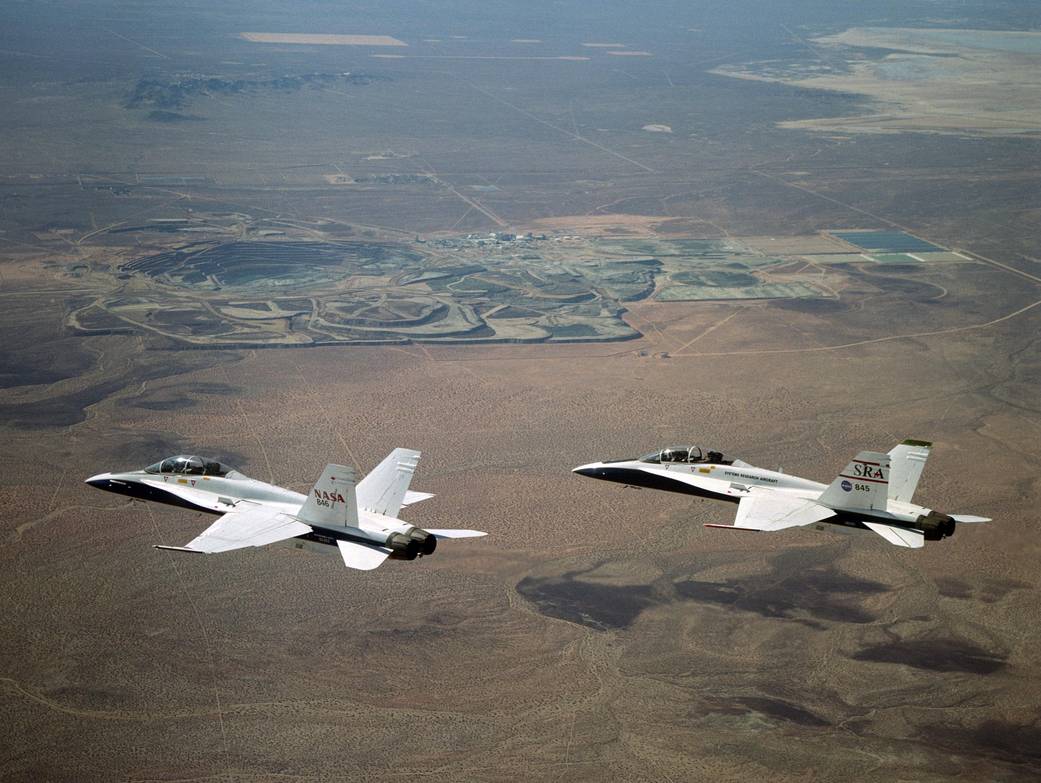EC01-0050-9
After completing a milestone autonomous station-keeping formation, two F/A-18B aircraft from the NASA Dryden Flight Research Center, Edwards, CA, return to base in close formation with the autonomous function disengaged. For the milestone, the aircraft were spaced approximately 200 feet nose-to-tail and 50 feet apart laterally and vertically. Autonomous formation control was maintained by the trailing aircraft, the Systems Research Aircraft (SRA), in the lateral and vertical axes to within five feet of the commanded position. Nose-to-tail separation of the aircraft was controlled by manual throttle inputs by the trailing aircraft’s pilot. The milestone was accomplished on the seventh flight of a 12-flight phase. The AFF flights were a first for a project under NASA’s Revolutionary (RevCon) in Aeronautics Project. Dryden was the lead NASA Center for RevCon, an endeavor to accelerate the exploration of high-risk, revolutionary technologies in atmospheric flight. Automated formation flight could lead to formation fuel efficiencies and higher air traffic capacity. In the background is the U. S. Borax mine, Boron, CA, near the Dryden/Edwards Air Force Base complex.February 21, 2001NASA Photo / Jim Ross› Read Project Description
1 min read

























